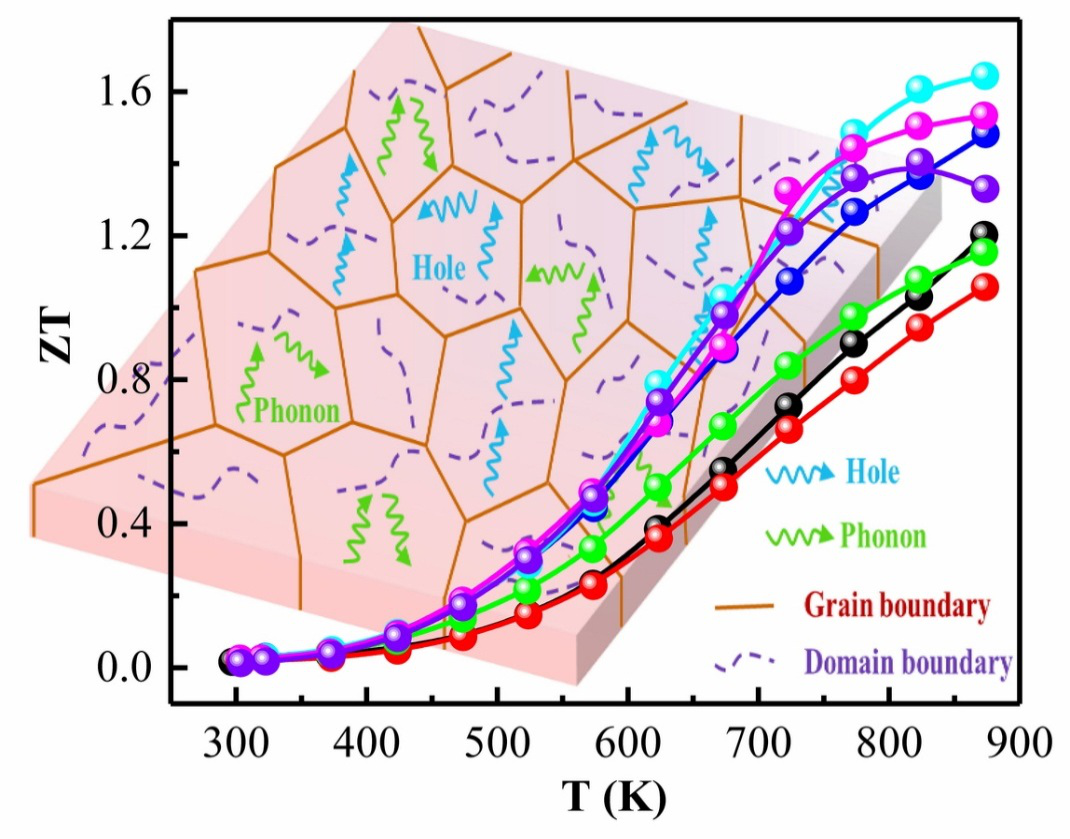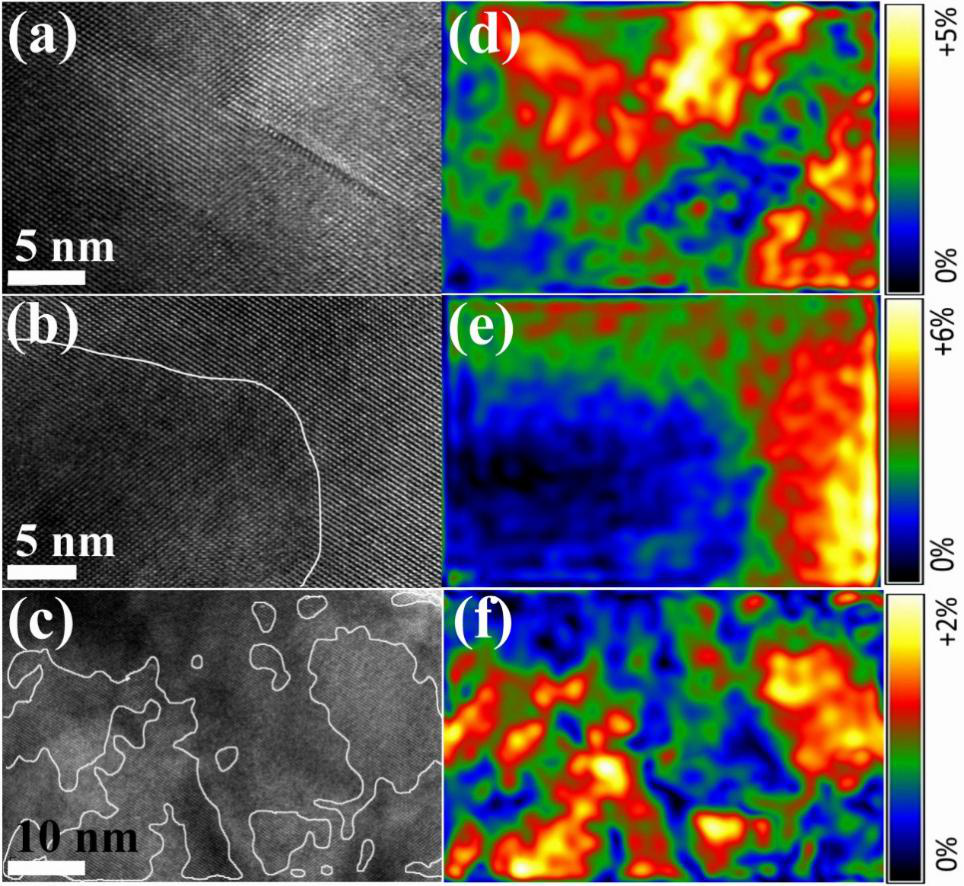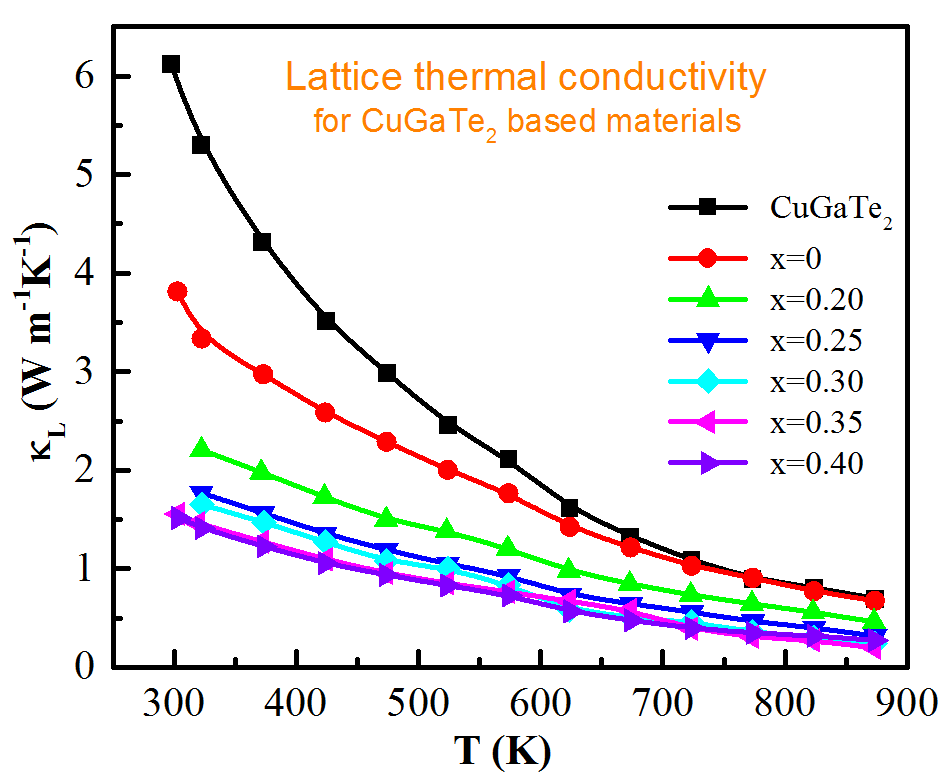Chinese scientists with Institute of Solid State Physics, Hefei Institutes of Physical Science developed chalcopyrite based compounds with record high thermoelectric performance.
Today, thermoelectrics attracts widely research interest due to its obvious advantages, which can environmentally friendly transfer energy from heat to electricity or vice versa without moving parts nor any pollution.
However, the current commercial applications are limited because of the low efficiency of thermoelectric conversion.
The efficiency of thermoelectric (TE) device is determined by the TE figure of merit, ZT.
Chalcopyrite compound CuGaTe2 absorbs many research interests due to its high power factor. However, its high intrinsic lattice thermal conductivity seriously impedes the promotion of its thermoelectric performance.
In fact, scientists have always been trying to figure out how to further improve the thermoelectric performance for CuGaTe2 based compounds.
Recently, ZHANG Jian and his colleagues developed a new method to modify the microstructure by design of domain area.
Through alloying of isoelectronic elements In and Ag in CuGaTe2, a quinary alloy compound system Cu1-xAgxGa0.4In0.6Te2 (0<=x<=0.4) with complex nanosized strain domain structure was prepared. Due to strong phonon scattering mainly by this domain structure, thermal conductivity (at 300K) dropped from 6.1 W·m-1·K-1 for the host compound to 1.5 W·m-1·K-1 for the sample with x=0.4.
As a result, the optimized chalcopyrite sample Cu0.7Ag0.3Ga0.4In0.6Te2 presented an outstanding performance, with record high ZT reaching 1.64 (at 873K) and average ZT reaching 0.73 (between approximately 300-873K), which were approximately 37% and 35% larger than the corresponding values for pristine CuGaTe2, respectively.
All findings demonstrated that such domain structure arising from isoelectronic multielement alloying in chalcopyrite compound could effectively suppress its thermal conductivity and elevate its thermoelectric performance remarkably.
These studies are sponsored by National Natural Science Foundation of China.
Link to the paper: Design of Domain Structure and Realization of Ultralow Thermal Conductivity for Record‐High Thermoelectric Performance in Chalcopyrite

Schematic image of the transport process for holes and phonons; Temperature dependence of ZT values for pure CuGaTe2 and samples Cu1-xAgxGa0.4In0.6Te2 (x=0, 0.20, 0.25, 0.30, 0.35, 0.40) (Image by ZHANG Jian)

HREM images and corresponding GPA strain analysis maps for Cu1-xAgxGa0.4In0.6Te2 (x=0.30). Here (a), (b) and (c) are HRTEM images; while the strain map (d), (e) and (f) correspond to image (a), (b) and (c), respectively. The yellow, red, blue and green colors show areas with tensile strains, as indicated by the scale bar. (Image by ZHANG Jian)

Lattice thermal conductivity L for pure CuGaTe2 and samples Cu1-xAgxGa0.4In0.6Te2 (x=0, 0.20, 0.25, 0.30, 0.35, 0.40). (Image by ZHANG Jian)
Contact:
ZHOU Shu
Hefei Institutes of Physical Science (http://english.hf.cas.cn/)
Email: zhous@hfcas.ac.cn
 Tel: +86-551-65591206
Tel: +86-551-65591206
 Fax: +86-551-65591270
Fax: +86-551-65591270
 Emai: zhous@hfcas.ac.cn
Emai: zhous@hfcas.ac.cn
 350 Shushanhu Road
350 Shushanhu Road